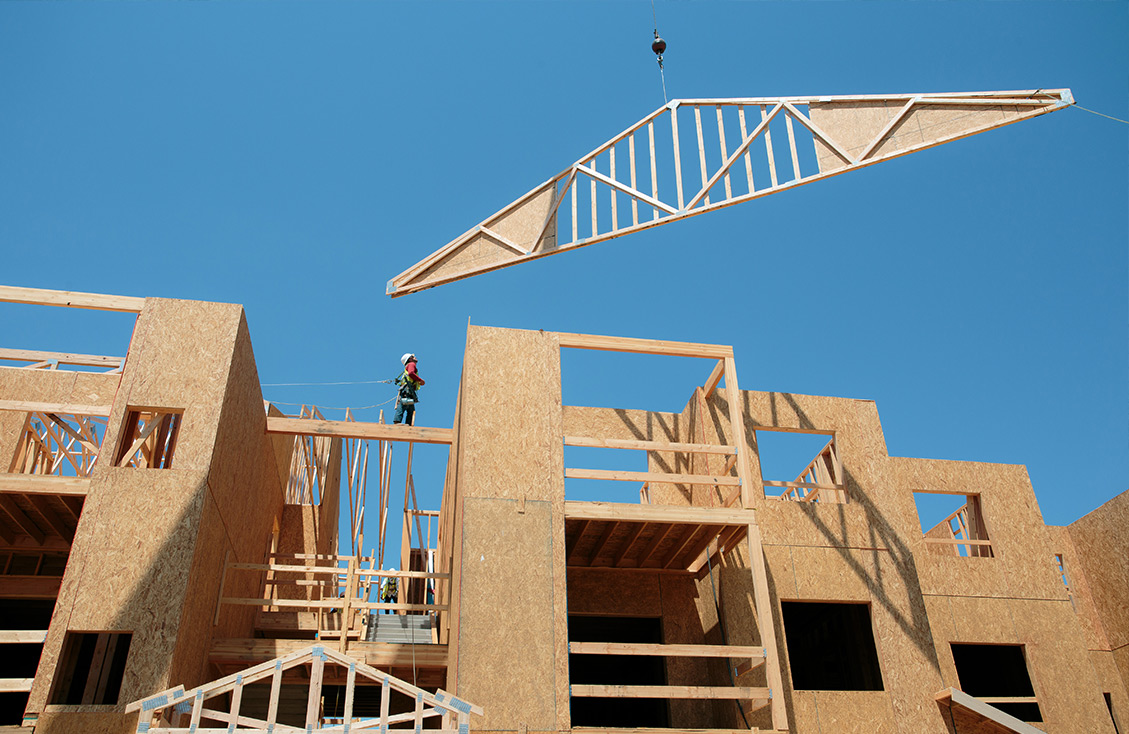Investor Overview
THE COMPANY
UFP Industries, Inc. is a multibillion-dollar holding company headquartered in Grand Rapids, Michigan, with subsidiaries around the globe that serve a wide range of customers, from builders to manufacturers to home improvement retailers. UFP is the largest converter of softwood lumber in North America and serves its customers through three business segments:
UFP RETAIL SOLUTIONS
UFP Retail Solutions has built a commanding share across retail building products dealers, including Big Box, Independent and two-step distribution. These customers serve primarily the repair and remodel market, which is benefitting from strong secular trends, providing UFP Retail Solutions a robust and sustainable runway for growth. Major product lines in this segment include outdoor living brands ProWood pressure treated lumber and Deckorators composite decking and railing.
UFP CONSTRUCTION
As the premier supplier of roof trusses, floor systems and related engineered wood and non-wood components to major builders of single-family, multi-family and factory-built housing, UFP Construction is strategically positioned to benefit from the long-term trends in home construction. Underbuilding of residential housing over the last 15 years and the growing number of first-time buyers entering the market has created a sustainable runway for growth in new construction, despite near term disruptions caused by interest rates and supply-side concerns. Our Concrete Forming Services and Commercial construction business units serve infrastructure and non-residential construction markets.
UFP PACKAGING
UFP Packaging is the leading industrial wood and non-wood packaging solutions provider to multinational OEMs around the globe. We believe the long-term outlook for durable goods manufacturing is positive, providing growth opportunities for industrial lumber and mixed-material packaging. Demand for our products is driven by the resilient nature of the end markets in which we operate and the moderate cyclicality of those markets.
WHY THREE BUSINESS SEGMENTS?
Our three business segments align exactly with the top three end markets for softwood lumber in North America – retail, construction and packaging. These distinct but complementary segments diversify our product and customer mix and create operational and procurement advantages in our operations. Furthermore, as lumber prices move higher or lower, our variable- and fixed-price product lines are affected in opposing ways, creating a natural operational hedge. UFP’s business model is unique in its ability to limit the impact of volatile prices on profitability, and our procurement and pricing practices become competitive advantages as they mitigate risk and enhance margins. Within this framework our focus on execution delivers consistent, superior financial results.
FINANCIAL
UFP has built a track record of creating shareholder value over its 69-year history. Our growth, whether organic or through acquisition, is supported by strong cash flow and a conservative capital structure. Our approach to M&A is return focused, with scale and synergy being top drivers as we strategically expand our product portfolio, capabilities, and footprint. Asset management, capital allocation discipline and enhancing our EBITDA margin have combined to provide strong returns on capital over the last 20 years, as well as steady gains in earnings per share and dividends.
BUSINESS MODEL AND OUTLOOK
Our diverse end markets and balanced business model help protect us from lumber market fluctuations and cyclical economic impacts. Our commitment to innovation has led to new products and services, which, along with improved pricing discipline, has enabled us to move steadily up the value chain. Recent advances in automation and process innovation have resulted in greater operational efficiencies, speeding our transformation into a strategic solutions provider.
Our long-term target is to maintain or exceed an adjusted EBITDA margin of 12.5% in five years.


